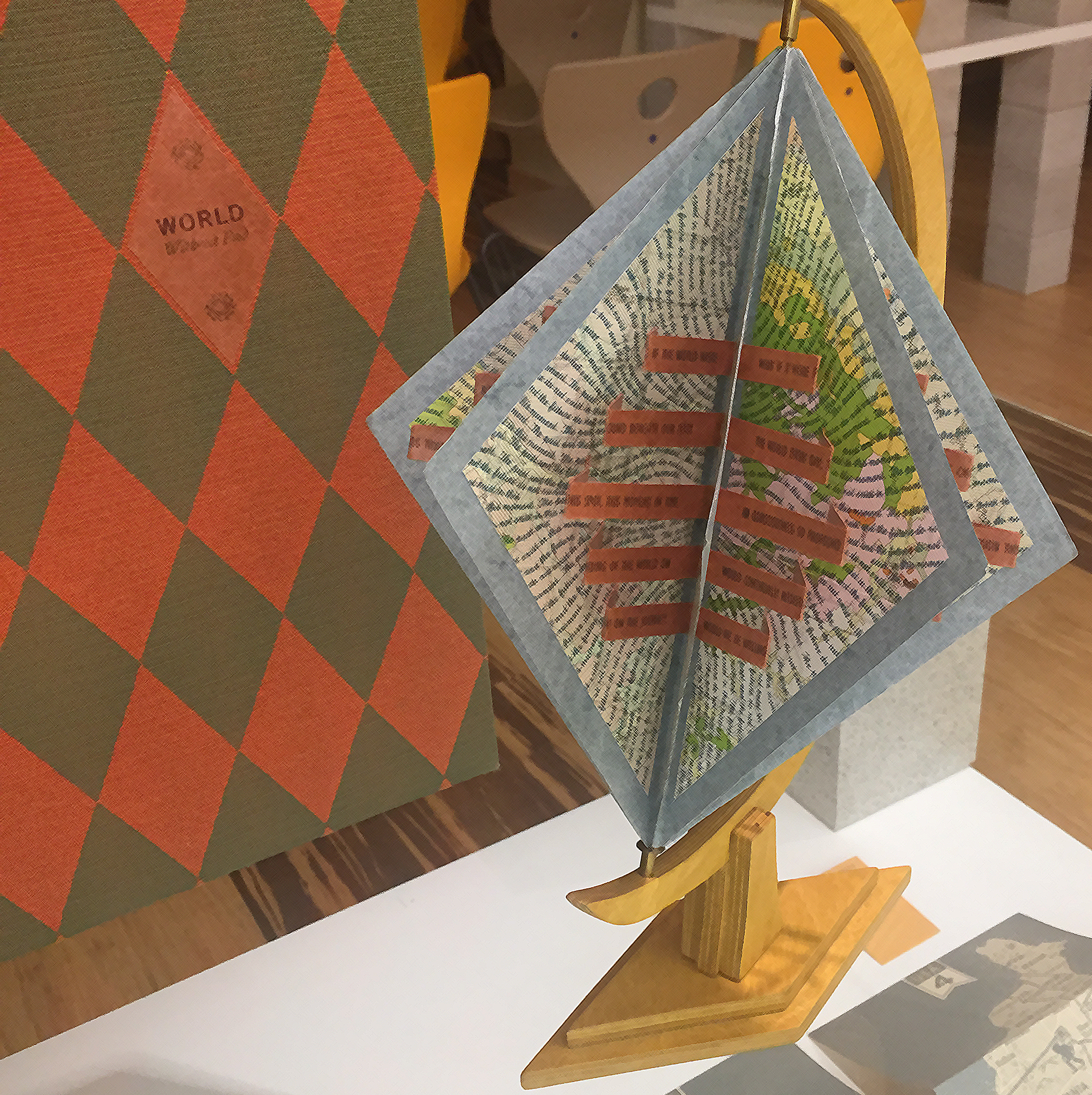Books as Aesthetic Objects

.jpg)
By Ben Blount
To describe a book like Ben Blount’s Africans in America : a Short History is like over-explaining a great joke. Elucidating what makes it so compelling runs the risk of surgically removing that very charm. So, apologies in advance.
Our fearless leader and curator, John Cutrone occasionally laments that when we focus on the more unusually-produced works in our collection, we take the focus away from the traditional book arts. The charm of Africans in America is that deceptive simplicity expertly executed. The book is bound in a faux library binding, the kind of binding libraries use for collections of serials or books that are heavily used in order to give them a longer shelf-life. This unassuming exterior gives the expectation of a dry, dull textbook and sets up the surprise the reader feels when they encounter the high-quality letterpress printing and the text when they open the volume.
Each page contains a year from 1619 to 2009 with no other text save for four landmark years: 1619, the arrival of enslaved Africans at Jamestown, 1865, the abolition of slavery, 1964, the passing of the Civil Rights Act and 2009, the election of President Barack Obama when “Racism is officially ended.” To state the obvious, Africans in America highlights the vacuous and cursory nature given to discussions of African-American history and racism in our educational systems, in journalism and in day-to-day discourse. These 3D images bombard your senses with layered textures, opening windows and closing doors in a seeming dreamscape. Each image stands before the you, daring you to define its purpose, its uniqueness and its importance in the journey of this work.
In the Jaffe Center for Book Arts, you know that when you take a book from the shelf, you’re going to encounter something unusual and that’s most likely the case for other collections that own Africans in America. But I have this fantasy that someday this work will find its way into an ordinary library collection hidden in the sea of other books in the E185 Library of Congress classification. And someday, some unsuspecting student or faculty member will be browsing the stacks and happen upon this extraordinary book and have the best surprise of their day. I imagine that would be the perfect way to experience it for the first time. Click here for slideshow.
- Daniel Scheide